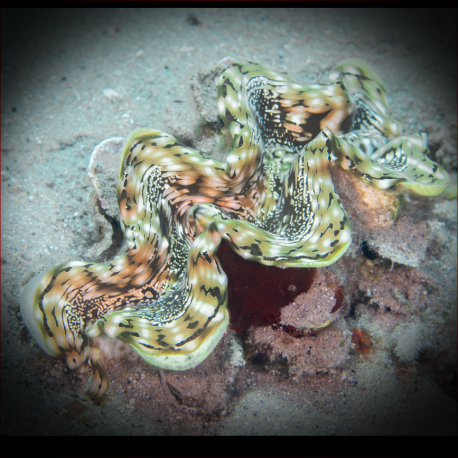More info
Datasheet
| Minimum Tank Size | 200 litres / 52.83 US gallons |
| Maximum Size | 41.0cm / 16.14inches |
| Reef Compatible | Always reef safe |
| Temperament | Peaceful |
| Temperature | 22.2°C / 71.96°F - 25.6°C / 78.08°F |
| Specific Gravity | 1.020-1.025 |
| Carbonate Hardness | 8-12 |
| pH | 8.1-8.4 |
General Description
The Tridacna Squamosa, also known as the Fluted clam, is a species within the Tridacninae family. These large clams are notable for their impressive size and vibrant colors.
Aquarium Suitability
With a peaceful temperament, this species is suitable for aquariums with care. It is essential to maintain high water quality, including proper oxygenation, and provide bright illumination for the clam's well-being.
Demands, Care, and Hardiness
Tridacna Squamosa thrives in aquariums with powerful lighting and excellent water quality. The calcium levels should be maintained between 400 and 440 ppm for optimal shell development. These clams are hardy with an average hardiness rating.
Reef Suitability
Tridacna Squamosa is always reef-safe, making it a compatible addition to reef aquariums.
Aquarium Setup
When setting up the aquarium for Tridacna Squamosa, ensure a minimum tank size of 200 liters. Bright illumination is essential for the clam's health, and water conditions should have a pH range of 8.1-8.4, a specific gravity of 1.020-1.025, and a temperature between 22.2-25.6°C.
Behaviour
These clams may become attached to rocks or sand over time. Care should be taken not to damage their delicate foot when moving them. Check for pyramid snails that target clams, as they can be detrimental to their health.
Feeding and Diet
Small Tridacna Squamosa clams require a diet of phytoplankton until they reach a size where they can primarily derive nutrition from photosynthesis. Supplementing with phytoplankton for larger specimens is beneficial.
Dimorphism and Captive Reproduction
Tridacna Squamosa can be bred in captivity, making captive-bred specimens available through certain suppliers. Consider sourcing a captive-bred clam from a local fish store for sustainability.
Habitat and Distribution
These clams are native to the East Indian Ocean, West Indian Ocean, Australia, The Red Sea, Indonesia, and the Central/West Pacific regions. Their natural habitat consists of vibrant reef ecosystems, where they play a crucial role in the marine environment.

